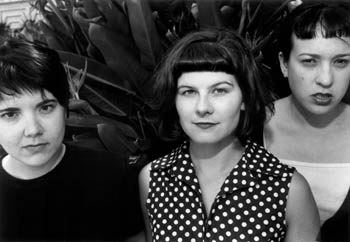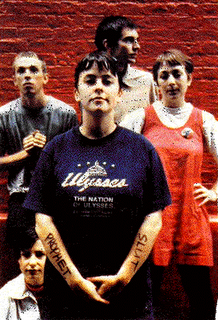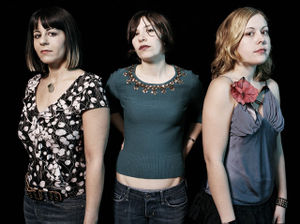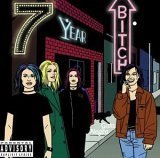"We’re Bikini Kill and we want revolution – grrrl style now!
Kathleen Hanna" (Bikini Kill)
Rewind back to the early-to-mid-nineties and bands such as Bikini Kill, Huggy Bear and Bratmobile were part of an emerging movement of bands with feminist politics called Riot Grrrl. Despite their huge popularity, they were either ignored, exploited or ridiculed by the mainstream media. This article is going to explore the relationship between the Riot Grrrl movement and the media, including the media blackout and representation of Riot Grrrl politics and point out the huge role that the media played in the movement’s demise.
Although issues of race and class have also been blamed for the purported downfall of the Riot Grrrl movement, considering the politics of the movement, it could be argued that it was the media’s portrayal of Riot Grrrl’s race and class that was responsible. Despite the mainstream media’s lies and misconstructions, the Riot Grrrl subculture – or at least its politics and productions - still lives and is expressed in communities of post-modern feminist musicians, zine makers and festival organisers.
Intro: Who were they?
Kathleen Hanna" (Bikini Kill)
Rewind back to the early-to-mid-nineties and bands such as Bikini Kill, Huggy Bear and Bratmobile were part of an emerging movement of bands with feminist politics called Riot Grrrl. Despite their huge popularity, they were either ignored, exploited or ridiculed by the mainstream media. This article is going to explore the relationship between the Riot Grrrl movement and the media, including the media blackout and representation of Riot Grrrl politics and point out the huge role that the media played in the movement’s demise.
Although issues of race and class have also been blamed for the purported downfall of the Riot Grrrl movement, considering the politics of the movement, it could be argued that it was the media’s portrayal of Riot Grrrl’s race and class that was responsible. Despite the mainstream media’s lies and misconstructions, the Riot Grrrl subculture – or at least its politics and productions - still lives and is expressed in communities of post-modern feminist musicians, zine makers and festival organisers.
Intro: Who were they?
The Riot Grrrl movement developed in the United States in the late eighties and early nineties. The country had experienced a conservative government throughout the eighties, with Ronald Reagan and the George Bush Snr. serving as Presidents. The conservative nature of the Reagan and Bush administrations meant that they increased funding for the military and privatisation schemes, and reduced subsidies for health, social services and the arts. The governments were seen to focus mainly on economic affairs and held traditional right-winged values in support of Christianity and against reproductive rights – sounds pretty familiar right?
So the political ideologies of the Riot Grrrl movement were influenced by this anti-progressive political thought and the general conservative cultural climate of the United States. Another push for Riot Grrrl was and the machismo of the punk scene. Riot Grrrl draws on third-wave feminist traditions. This does not mean they hated men, but instead that they recognised that men dominated institutions including the music scene, and men often abused their privilege in patriarchal society. Third wave - or post-modern - feminism also questions and demands a deconstruction of seemingly stable identities, such as race, gender, class, disability and sexuality. Differences between women could be recognised because they would be seen as individuals, all speaking out about their unique experiences. Because of this, Riot Grrrl culture was also a big space for women to speak out about abuse and discrimination, to stop being seen as objects and reclaim their subjectivity.
The media and Riot Grrrl
Riot Grrrls employed three main outlets to get this deconstructionist political message across; zines, which enabled individual experiences to be heard, punk music that spoke blatantly about women’s abuse, and discrimination, and participants also spoke out at conventions and workshops run by the movement. Unfortunately the mainstream press could not understand the post-feminist ideologies of Riot Grrrl and instead often diffused the political messages of the movement.
The media acts as a “cultural intermediary” - in this context, a cultural intermediary refers to journalists and their potential to interpret what they believe is a valuable cultural product. Riot Grrrl began to receive regular attention in the mainstream media press by the end of 1992. Participants of the movement were disgusted by the manipulation of the movement’s message by media and in 1993 called for a mainstream media blackout where Riot Grrrls were asked not to give any interviews to the often exploitative press, that often posited Riot Grrrl with the ‘girl power’ message of the Spice Girls.
Instead of craving mainstream media attention, the Riot Grrrl movement wanted to rely on alternative media such as zines and conventions for their ideologies to be heard. Through the alternative media, Riot Grrrls hoped to achieve their own construction of the movement. However, with or without the Riot Grrrls input, the mainstream media were still going to discuss the subculture. This resulted in not only misconceptions, but also on a particular occasion, blatant lies being published about Riot Grrrl.
Sex, lies and media manipulation…
One of the key bands and instigators of Riot Grrrl was Bikini Kill from Olympia, Washington. The lead singer, Kathleen Hanna, often screamed out lyrics about sexual abuse. The Washington DC newspaper, The Washington Post, ran a story about Hanna, wrongly reporting that she had been sexually abused by her father as a child. This article caused Hanna a great deal distress and because Hanna had many family friends and relatives living in Washington D.C. the article brought about considerable heartache for her family. This incident was an extreme case and although it is probably the worst erroneous reporting concerning the movement, there have been plenty of misconceptions in the mainstream media about Riot Grrrl.
One of the most common misconceptions of the Riot Grrrl movement that was reported in the mainstream press was that the movement hated men. American publications such as Rolling Stone and The Seattle Times and the UK newspaper the Daily Mail all reported that the movement either did not like men or hated men. Riot Grrrl bands would often perform asking the men in the audience to let the women push to the front or even perform women-only shows. This was not because the bands hated men, it was because they recognised that men either dominated other rock and punk shows or took over the mosh pit in front of the stage at such shows. Riot Grrrl bands wanted to give women an opportunity to experience the concerts as men had been able to without being shoved to the back. In addition, the movement had many men as participants like such Billy Karen in Bikini Kill and the male member of the Frumpies and the UK band, Huggy Bear.
It was also publicised by the mainstream press that Riot Grrrls’ lacked rules, organisation and even doubted their existence as a movement. Kim France from the Rolling Stone reported, “they aren’t really a movement”, USA Today disagreed saying that they were a movement but one with no rules and Erin Schraw from the Portland Oregonian reported, “the Riot Grrrl revolution has … no rules and no organization”. These accounts of Riot Grrrl were a misunderstanding of the movement by the press. It was not that they did not have any rules - for example misogyny would not be tolerated - it was that the definition of being a Riot Grrrl was somewhat flexible. This was, in keeping with their feminist ideology as discussed above, so that individuals and difference could be recognised within the movement. For example, one participant might consider the issues around abortion rights as particularly relevant to their own experience; also some may prefer to write about their issues in zines while others might like to sing about their politics through music etc. Reporting such misconceptions meant that riot Grrrl’s political ideologies were often lost or misconstrued.
Mainstream media articles about the Riot Grrrl movement mainly talked about its music or fashion. This also saw the movement’s political messages getting lost. Although music was central to the Riot Grrrl subculture, it was not exclusively responsible for defining the movement. The media’s attention to the music and fashion meant that the important political motivation behind the movement was diminished. The press frequently discussed what Riot Grrrls were wearing, trying to create a certain Riot Grrrl look and identity. Creating a static Riot Grrrl identity was what the movement’s participants were worried about and one of the main reasons that they called for a media blackout in the first place. The choice of Riot Grrrl’s music and fashion that were featured in mainstream media diluted the politics of the movement.
Additionally, the political nature of Riot Grrrl was diluted because the press began to associate many female musicians with the movement, even though they did not consider themselves participants of Riot Grrrl. Women artists such as Kim Gordon from Sonic Youth, Courtney Love from Hole and the band 7 Year Bitch were all referred to as Riot Grrrls, even though they did not directly identify themselves as Riot Grrrls. Gordon and Love did share some feminist ideologies with Riot Grrrl but both women did not appreciate being lumped together with the movement. Not all women in rock identified as Riot Grrrls. The bands 7 Year Bitch, L7 and Babes in Toyland were associated with Riot Grrrl only because their music was similar to those typical of the movement (heavy rock or punk) and the fact that the band was made up of all women. Furthermore, if a female musician is referred to as a riot grrrl and they are not, then this can further obscure the political nature of the riot grrrl movement.
Riot Grrrl was continually being misrepresented in the mainstream press and in addition suffered scepticism and negativity from journalists. USA Today published “[t]here’s no telling whether this enthusiasm or the Riot Grrrls’ catchy passion for “Revolution Girl [sic] Style” will evaporate when it hits the adult real world”. These reporters clearly doubted the potential and life of the movement. The Daily Mail offered a very negative view reporting, “[a]fter two years have they really achieved anything for women? This answer is no”. It was this kind of critical reporting and the misconceptions by the mainstream media that made it very difficult for the movement to continue in its form at that time.
Where are they now?
While the media has portrayed a disappearance of Riot Grrrls, this is not necessarily correct. While some Riot Grrrl bands and zines have disbanded, the politics of the movement are still reflected in contemporary music, publications and community groups. Many Riot Grrrl bands have moved on to different musical projects because participants wanted to experiment with new forms of expression and not just the punk genre. Hanna, one of the vanguards of the movement, perceives its continuing existence in musicians such as Peaches, Chicks on Speed and Tracy from the Plastics. Furthermore, Riot Grrrl ideology and organising principles can be seen globally in festivals such as Ladyfest, a series of non-profit, community-based festivals for women that focus on music, art photography and workshops. Ladyfest has been running in Brisbane for several years.
The media had constructed its own view of what they thought the Riot Grrrl movement was. They attached a fixed identity to the movement, which were particularly what the participants had most dreaded and one of the main motivations behind their media blackout. Riot Grrrl has been easily misconstructed and the media plays a large part in constructing subcultures whilst reporting on them. Despite mainstream media’s manipulation, however, Riot Grrrl was not insignificant and the movement’s participants have learned from their experiences. Some Riot Grrrl punk bands are still performing; Sleater-Kinney and the Frumpies still have regular shows, Bratmobile recently reformed in 1999 and post-feminist zines are being produced more than ever, with increased globalisation provoking a wider use of the internet. Other DIY musicians such as Peaches, Chicks on Speed and Le Tigre still carry on some of the Riot Grrrl political ideologies through their music and performances.
Works Consulted
Barrowclough, Anne. “Save the World? Not a Hope, Grrrls. Daily Mail. 27 Mar. 1993: 27.
Buchanan, Rachel. “Not For the Dolly Birds.” The Age. 17 Jun. 1994: 14.
Carpenter, Lorraine. “They’re grrreat! From Bikini Kill to Le Tigre, Kathleen Hanna Keeps Fighting the Good Fight.” Montreal Mirror. 16 Aug. 2001.
Chideya, Farai and Melissa Rossi. “Revolution, Girl Style.” Newsweek. 23 Nov. 1992: 84-86.
Cranny-Francis, Anne et al. Gender Studies: Terms and Debates. New York: Palgrave, 2003.
France, Kim. “Grrrls at War.” Rolling Stone. 8 Jul. 1993: 23-24.
Keene, Linda. “Feminist Fury – “Burn Down the Walls that Say You Can’t.”” The Seattle Times. 21 Mar. 1993: 12.
Japenga, Ann. “Punk Feminist Band Together As Riot Grrrls.” New York Times. 22 Nov. 1992: 43.
Schraw, Erin Hoover. “Grrrl Look Out, Guys Talk.” Portland Oregonian. 11 Oct. 1992: 10.
Snead, Elizabeth. “Feminist Riot Grrls Don’t Just Wanna Have Fun.” USA Today. 7 Aug. 1992: 5.
Thornton, Sarah. Club Cultures: Music, Media and Subcultural Capital. Cambridge, UK: Polity, 1995.









